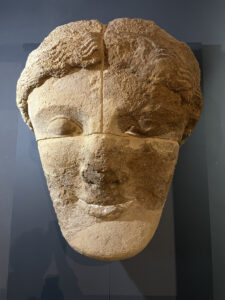In an healthy state, when we eat more than we burn, we get fat. Period.
The surplus of calories that we eat are stored or used in two different kinds of fat cells: White Adipocytes, or Brown/Beige Adipocytes.
White Adipocytes are giant gobble fat cells that accumulate fat.
On the other hand, Brown/Beige Adipocytes accumulate small drops of fat in their intracellular space that are used has “fire wood” to promote thermogenesis. These special types of coloured fat cells have an increased number of mitochondria that can dissipate significant amounts of chemical energy, through a special uncoupled respiration mechanism that produces heat1 – which makes us warm in the cold days, hot after exercising, or have hot flashes if going through hormonal changes.
As I wrote previously, our body is controlled by molecular clocks – which are set by the day/night cycle orderly managed by the sun planetary system we live in. The input of sun rays is the main trigger that controls our circadian rhythms, which activate the main clock in our body that is situated in the brain suprachiasmatic nucleus (SCN) of the hypothalamus.
Besides de-clogging our synapses through sleep, it is now known that these molecular clocks also control the rhythmic expression of numerous genes that regulate diverse physiological outputs, such as energy intake-and-use during the day2.
Recently, Chelsea Hepler and colleagues3 from the Feinberg School of Medicine of the Northwestern University in Chicago, discovered that restricting high-caloric feeding to the active period of the day in mice, switches the storage of fat to the thermogenesis cells – i.e. extra calories eaten during the active period of the circadian cycle (the day, for us humans) get stored in the Brown/Beige Adipocytes.
Furthermore, if fed in the right time such Brown/Beige Adipocytes have a greater energy expenditure. This happens because they are able to switch ON an extra round of futile energy burning cycle in the mitochondria; and, they do that by increasing the synthesis of Creatinine, a common waste product of our cells3.
These experiments might help explain why we get fat when we hit the fridge in the middle of the night. That is not our active cycle, our Brown/Beige Adipocytes are in rest mode – as should we.
So, if we have thoughts of about munching that giant piece of Parmigiano after 21h – it’s better we think twice. Let’s eat it in the morning.
And, to make it even better – then, we walk to work.

References
1 Fenzl, A. & Kiefer, F. W. Brown adipose tissue and thermogenesis. Horm Mol Biol Clin Investig 19, 25-37 (2014). https://doi.org:10.1515/hmbci-2014-0022
2 Lagarde, D. & Kazak, L. The timing of eating controls energy use. Science 378, 251-252 (2022). https://doi.org:doi:10.1126/science.ade6720
3 Hepler, C. et al. Time-restricted feeding mitigates obesity through adipocyte thermogenesis. Science 378, 276-284 (2022). https://doi.org:doi:10.1126/science.abl8007
